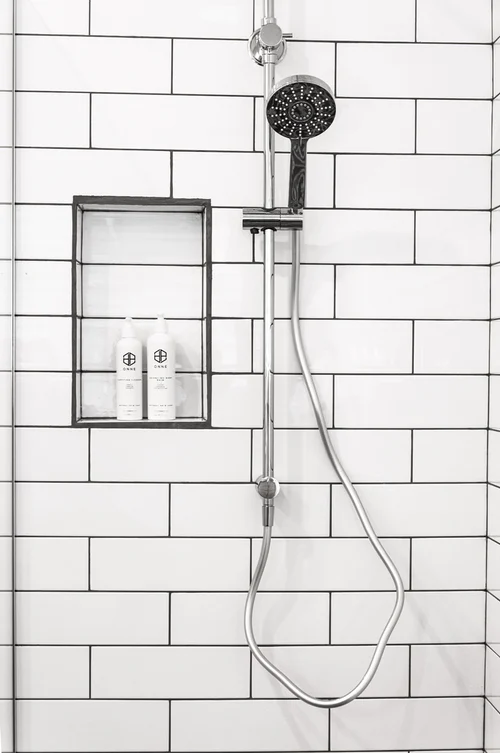WHY YOU SHOULD GET A PLUMBING INSPECTION BEFORE BUYING A HOUSE
Why You Should Get a Plumbing Inspection Before Buying a House

We know buying a home is an exciting experience, but it can also be a stressful one. Buying a house before you know about the plumbing can result in high water bills and add even more money onto the costs associated with moving.
Just recently in Toronto, a man purchased a home in Thornhill that had been uninhabited for over a year. When he moved in and acquired the property, he almost fell out of his chair when reading his first water bill. 38 000 dollars, no I didn’t add a couple extra zeros, that was truly his first water bill. The reason for such a high bill was as a result of the previous owners not paying the water bill and because of a plumbing leak! Now looking at this story, you might think, “well oh he can just file a claim and won’t have to pay, right?” but unfortunately that isn’t how it goes here. After filing his claim, he was told that it is actually up to the home buyer to be informed on any plumbing issues and bills.
If that story wasn’t enough to convince you to get a plumbing inspection, you might want to know that the most common leak usually goes unnoticed. A leaky toilet can waste up to 6000 gallons of water each and every month. That amount of water translates to a whopping 70$ added to your water bill every month. You would not have this problem, or could at least calculate the costs beforehand if you called a plumber for an inspection.
Another benefit of calling a plumber for an inspection pre house purchase, is that they check for so many other pipe problems. One of the last things you want is to purchase your dream home, only to find out that you have low water pressure, and that one of your pipes needs to be replaced or that your water heater is broken. All these are added and unexpected costs to add onto the initial cost of the home.
So what areas of the plumbing need to be inspected most? The four areas that need to be inspected most (to avoid the most damage are:
- Toilets
- Sewers
- Home Pipes
- Water Heater
- Showers
- Bathroom sinks

When looking at toilets, the plumber is looking for the following warning signs of poor toilet plumbing:
- Warping and discolouration near the base of the toilet
- Soft flooring around the toilet but not really anywhere else in the bathroom
- Loosely secured toilet (toilet may move when touched or sat on
Each of these can mean that the seal on the toilet has gone and that ist is no longer efficient plumbing. And think twice before trying to seal up a toilet on your own, this can really make the problem even worse and cost you an absorbent amount of money in the long run.
Next let’s take a look at the sewer problems. Something that would undoubtedly ruin your new home experience is having a rather smelly issue with sewage draining and removal. Don’t get your wallet even more dirty by skimping out on the sewer check before buying. Deteriorating sewer pipes and tree roots are two of the major factors that impact old homes especially.
If your prospective new home has a septic tank, find out where it is, if there are any indications of leaking (look for moisture and a foul odor) make sure you have someone check it out.
Thirdly let’s look at the house’s piping itself. Deteriorating, lead, small scale, and corroded pipes are all costly problems you can’t see without plumbing equipment. Finding out after the fact that you are going to have to drop another few thousand dollars on a house you just purchased can be devastating to any new homeowner. Plumbing inspections will check for these problems and so much more potentially saving you a few thousand dollars or even your entire home.
Next, your water heater will be checked. Buying a home is no good if you are going to have to purchase a whole new water heater right away. Risk factors for needing a replacement are location, age, and capacity. If you are always running out of hot water, this is a pretty good indicator that you are in need of a new water heater.

Now, let’s discuss how a plumbing inspection can help you when it comes to the state of your shower. There are three main types of showers: metal, glass, and tile, each of these can be checked for leaks, and some are actually quite simple fixes (finally). With a metal shower, any leaks will mean the whole shower needs to be replaced, With glass however a leak in the door (which is most common) can be fixed quite easily and usually are not costly. A tile shower on the other hand can leak badly without being immediately detected ,and cause damage through the whole home. Something that affects all showers is a leak between the drain and the shower floor, a problem like this can allow for water to seep under the shower and generate water damage. A plumber is able to check for all of these potential issues during an inspection as well.
Finally, during an inspection, a plumber will look at the bathroom sinks. The two main issues with bathroom sinks are clogs and leaks. Luckily the leaks are usually at the joint/stopper underneath the sink and can be fixed just by tightening the nut on the pipe. The next issue may be a clog, identified by a slow draining sink as well as a “glug, glug” sound when draining (an indication that air is being trapped). Both of these issues can be checked for by filling the sink up and letting it drain all at once. If there is a leak in the sink you’ll see it and if it drains slowly, or makes the noise mentioned there is probably a clog.
If a plumber does indicate that there is an issue with any of the home’s plumbing, fixing said issue can be extremely costly. Discuss with the current homeowners your findings and do not complete the purchase until they have agreed to either fix the issues or lower the cost. If you are interested in a plumbing inspection, the Rooter Team conducts inspections whenever it is convenient for you, so what are you waiting for? Let us save you future stress when buying a home.
